When the movement is designed, it is divided into two-way winding and winding technology, and the device must meet the setting of shaking the watch in two directions and one direction. It is necessary to be able to set different time ratios between winding and dormancy according to different watch movements, so as to keep the movement in a reasonable state, so that it will not be worn out, and it will not stop after running out of power. According to statistics, most self-winding movements can meet the winding requirements of watches if they rotate at 500 to 800 revolutions a day. If they are always on the chain, most of the watches are idling with the full chain, causing unnecessary wear on the gears of the movement. Big brands of watch winders are expensive. People who own all kinds of expensive watches don't need the money to buy watch winders. It can indeed bring a lot of convenience to life. Of course, there are cheaper watch winders that can also achieve the desired effect. However, ordinary people don’t have many watches, and they don’t necessarily need to use this kind of thing. If there is a mechanical watch that is not worn for a long time, as long as the chain is wound once a week to keep the mechanical gears running, the service life of the mechanical watch can be extended And precise travel time. Through the winding, the movement's mainspring is tightened, allowing the movement's mainspring to be retracted and retracted naturally during sleep.
Finally, there are usually two types of windows in the motor box of the watch winder, acrylic or glass.
Acrylic, also called PMMA or Acrylic, is derived from English acrylic (acrylic plastic). The chemical name is polymethyl methacrylate. It is an important plastic polymer material developed earlier. It has good transparency, chemical stability and weather resistance, easy to dye, easy to process, and beautiful in appearance. It is used in the construction industry. It has a wide range of applications and is also one of the main structures of the watch winder. Plexiglass products can usually be divided into cast plates, extruded plates and molding compounds. As for the acrylic fiber, acrylic cotton, acrylic yarn, acrylic nylon, etc. that are commonly heard in the structural components of the winder, they refer to man-made fibers made by the polymerization of acrylic acid and are not related to acrylic products. Among them, the acrylic sheet that people often say is polymethyl methacrylate (PMMA) sheet, which is polymerized by "methyl methacrylate monomer (MMA)". Or it is extruded from acrylic pellets through an extruder. In the past, the board was commonly called plexiglass. Acrylic is derived from the English acrylic, which means PMMA board made of organic compound MMA. Its transparency and light transmittance are like glass. Because all sheets made of transparent plastics such as PS, PC, etc. or inferior recycled MMA are collectively referred to as plexiglass. For the sake of differentiation, PMMA panels made of high-quality pure MMA are called acrylic panels to distinguish them from ordinary plexiglass panels. This is also one of the main features of the watch winder. Glass is formed by melting silicon dioxide and other chemical substances (the main raw materials for production are: soda ash, limestone, and quartz). A continuous network structure is formed during melting, and the viscosity gradually increases during cooling and hardens to crystallize the non-metallic silicate material. The chemical composition of ordinary glass is Na2O·CaO·6SiO2, and the main component is silicon dioxide, which is an amorphous solid with an irregular structure. It is widely used in buildings to separate wind and light. It is a mixture. Sometimes some transparent plastics (such as polymethyl methacrylate) are also called plexiglass. The use of this substance in the watch winder highlights the working structure of the watch winder.
When the watch is designed, it is divided into two-way winding and one-way winding technology. The winder must meet the setting of two-way and one-way watches. It is necessary to be able to set different time ratios between winding and dormancy according to different watch movements, so as to keep the movement in a reasonable state, so that it will not be worn out, and it will not stop after running out of power. According to statistics, most self-winding movements can meet the winding requirements of watches if they rotate at 500 to 800 revolutions a day. If they are always on the chain, most of the watches are idling with the full chain, causing unnecessary wear on the gears of the movement. Big brands of watch winders are expensive. People who own all kinds of expensive watches don't need the money to buy watch winders. It can indeed bring a lot of convenience to life. Of course, there are cheaper watch winders that can also achieve the desired effect. However, ordinary people don’t have many watches, and they don’t necessarily need to use this kind of thing. If there is a mechanical watch that is not worn for a long time, as long as the chain is wound once a week to keep the mechanical gears running, the service life of the mechanical watch can be extended And precise travel time. Through the winding, the movement's mainspring is tightened, allowing the movement's mainspring to be retracted and retracted naturally during sleep.
Many people have such questions, are the watch winders reliable? Is the watch winder harmful to the watch? Normally, the mainspring of an automatic watch can be wound up once every 200 full revolutions, and the clockwork of the watch The number of working laps is about 7.5 laps, and the total is 1500 rpm (if the watch has a net string). It takes about 15,000 seconds to turn the watch with this fan, which is equivalent to 4 hours. Tie the automatic watch to it, turn on the fan and let it spin slowly. In summer, you can wind the watch while blowing the air to cool you down. In winter, you can also use this method. Turn on the power for 3-4 hours. The watch is sure The clockwork will be full.
Does the watch winder work? When the watch is designed, there are two winding technologies, two-way winding and one-way winding. The watch winder should be able to shake the watch in two directions in different directions. It is necessary to be able to set different time ratios of winding and dormancy according to different watch movements, while keeping the movement in a reasonable state, that is, it will not wear out too much, and will not stop when it runs out of power. . According to statistics, most watch winders can rotate 500 to 800 revolutions a day to meet the winding requirements of the watch. If the watch is always on the chain, most of the watch is in the full chain idling state, causing unnecessary wear and tear on the movement gear. For those who do not wear automatic watches for a long time or have multiple watches, a watch winder can help you to check the time to a great extent. Because the watch does not work for a long time, the oil will freeze, and the time error of wearing the watch will be relatively large. There are also perpetual calendars or annual calendar watches with more complicated adjustments. If you do not wear them frequently, you need a watch winder. There are many steel materials in mechanical watches, such as steel wheels, escape wheels, gear shafts, bearings, screws and hairsprings. Therefore, watches are very easy to be magnetized. Once the mechanical watch is magnetized, the first effect is that the error increases, and the serious one will stop the watch. Although quartz watches do not have the problem of being magnetized, they may stop in a strong magnetic field.
So many people have such questions, is the watch winder reliable? Does it have a magnetization effect on the watch, let's take a look at how the watch winder works. Normally, the mainspring of an automatic watch can be wound up once every 200 full revolutions, and the number of working revolutions of the watch is about 7.5 revolutions, and the total is 1500 revolutions (if the watch has a clean string), use this It takes about 15000 seconds to turn the electric fan into the watch, which is equivalent to 4 hours. Tie the automatic watch to it, turn on the fan and let it spin slowly. In summer, you can wind the watch while blowing the air to cool you down. In winter, you can also use this method. Turn on the power for 3-4 hours. The watch is sure The clockwork will be full. If it is a metal strap, you can also put it in the watch box, and then tie the watch box to the wind deflector. Of course, it must be fixed and stable. Don't turn it off. Experiments have proved that the load-bearing capacity of the air guide vane is very large. It is no problem to turn a watch weighing about 200 grams. You can use this method to "care" your watch every weekend. This kind of DIY still has a lot of risks, so it is not recommended for watch friends to make their own watch winders, because the understanding of the technical parameters of their favorite watches is far from professional. Put the perpetual calendar into the watch winder when you are not wearing the watch, and it will provide a source of power for your watch. The watch winder has four modes for winding. Generally, the most commonly used is the first mode, which rotates clockwise. The watch winder rotates for 2 minutes, stops for 6 minutes, and rotates cyclically (the specific choice is based on the accuracy of the watch. Rotation mode). According to the working principle of the watch winder, it is known that the watch winder has no magnetization effect on the watch, so you can use it with confidence and there will be no factors that affect the accuracy of the watch.

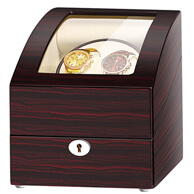


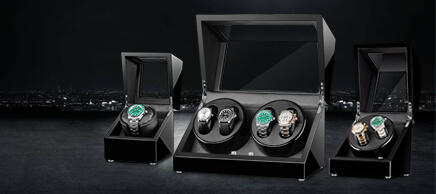
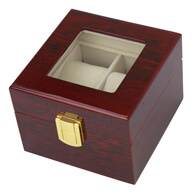
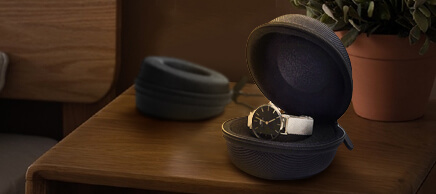
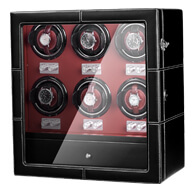


Congratulations, you have completed Facebook authorization.
To finish the login process, please provide email address.